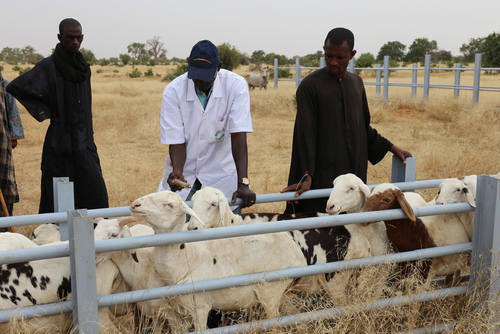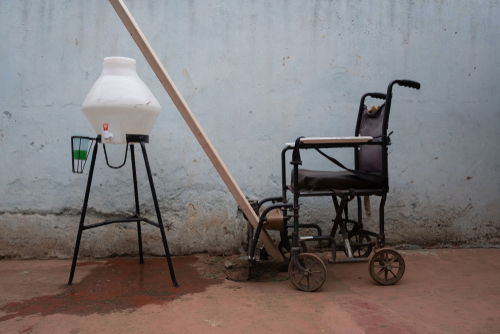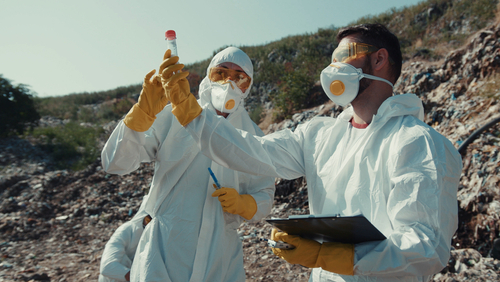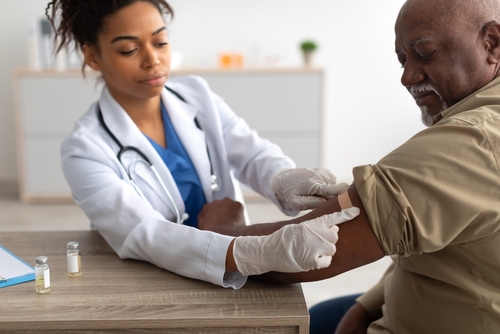January 08, 2024
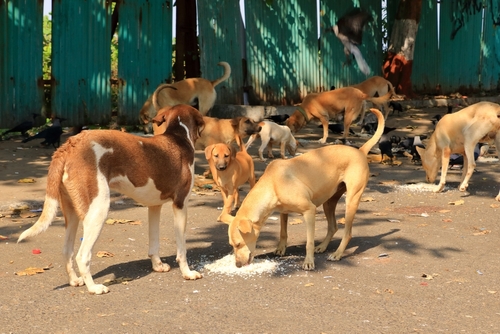
Researchers prefer to use biobanks with quality assurance and well-characterized specimens.
One Health Trust researchers co-authored a study that estimated the economic value of various attributes of biobanks. Using a conjoint analysis methodology, they assessed 78 researchers’ perceived value of attributes such as handling fees, breadth of consent, time taken to fulfill requests, availability of specimens, confidence in the quality of specimens, and access to key endemic in-country sites. Respondents primarily preferred a biobank that provides confidence in the quality of the specimens, with a 26 percent higher ranking of such biobanks compared to the mean (p-value < 0.001). The second-most preferred attribute of biobanks was the availability of well-characterized specimens with a 20.4 to 20.9 percent higher ranking relative to the mean (p < 0.001). Notably, researchers with prior experience acquiring bio-samples were more sensitive to biobanks’ handling fees, which aligns with existing concerns about the commercialization of biobanks. These findings can assist in the strengthening of existing biobanks to enhance their value and demand and improve their performance as research tools. [Nature Scientific Reports]
Insights into the problem of stray dog bites in India
An article published in The Week featured OHT’s Dr. Ramanan Laxminarayan’s commentary on India’s lack of adequate legislation for vaccinating, sterilizing, and controlling the national stray dog population. In a country that accounts for more than one-third of global deaths attributable to rabies, with increasingly frequent stray dog bites, recommendations include implementing a national sterilization drive for stray dogs and creating laws that ensure the health of humans and animals. [The Week]
Predictive maps reveal hotspots for AMR in food-producing animals within European countries.
OHT’s Dr. Thomas Van Boeckel co-authored a study that used prevalence estimates of antimicrobial resistance (AMR) from 31 European countries to produce predictive geospatial models for Escherichia coli, nontyphoidal Salmonella, and Campylobacter spp. in food-producing animals across Europe. The proportion of antimicrobials with over 50 percent resistance (P50s) was lower for Salmonella than for E. coli and Campylobacter, possibly due to the European Union’s previous efforts to lower the prevalence of Salmonella. In 9 out of 31 countries, more than half of cattle, pigs, and poultry are estimated to be raised in areas predicted to be AMR hotspots by the model. The researchers also observed that the similarity between average P50s derived from subnational point prevalence surveys (PPS) and those from national survey data differed by country, likely due to varying sample sizes across countries. [Emerging Infectious Diseases]
Assessing the burden of AMR on mortality in the WHO Africa Region
A systematic analysis expanded on a 2019 Global Burden of Disease study to estimate the number of deaths and disability-adjusted life-years in the WHO Africa Region in 2019 attributable to and associated with bacterial AMR. An estimated 1.05 million deaths (95% uncertainty interval: 829,000-1,316,000) were associated with AMR, and 250,000 deaths (95% UI: 192,000-325,000) were attributable to AMR. Compared to other leading causes of death in the region, including HIV/AIDS and malaria, AMR was associated with a greater burden of mortality in 2019 but received far less financial investment. A critical finding of the study was the marked absence of data on pathogen distribution by infection and resistance profiles of certain pathogen-drug combinations, particularly in central sub-Saharan Africa. [The Lancet Global Health]
Gold-standard test for MRSA confirmation is often absent in MRSA prevalence studies in Cameroon.
Researchers conducted a mapping systematic review to understand methicillin-resistant S. aureus (MRSA) prevalence and AMR profiles in Cameroon. Analysis of 24 studies revealed a wide variety of estimates of MRSA prevalence in humans, ranging from 1.9 percent to 46.8 percent. MRSA prevalence in humans was influenced by geographical location, type of healthcare facility, and whether the patient had a concurrent illness. Prevalence estimates also differed greatly across studies on animals, food, and environmental samples, among which the highest prevalence estimates were observed in hospital-based surface samples. Rates of antibiotic resistance in MRSA isolates varied across cities and populations, with some studies revealing 100 percent resistance to penicillin and oxacillin. Notably, many studies included in this analysis did not use the mecA gene test, the gold standard method to confirm MRSA infection, raising questions about the reliability of the results of these studies and emphasizing the need for standardized methods to identify MRSA nationally. [PLOS One]
Isolated community interventions have minimal impact on the incidence of stillbirth in sub-Saharan Africa.
Researchers performed a systematic review and meta-analysis to assess the effect of community-based interventions to combat stillbirth in sub-Saharan Africa, which accounted for 42 percent of global stillbirths in 2019. 17 papers that quantitatively measured the effectiveness of such interventions were included in the meta-analysis. Studies assessing community interventions showed that isolated intervention only slightly reduced the odds of stillbirth compared to the control communities, and the result was not statistically significant. Combining community interventions with health facility interventions, however, reduced the odds of stillbirth by 17 percent. Community-based interventions alone, without rigorous and longstanding integration into healthcare systems, may not reduce stillbirths in sub-Saharan Africa. [eClinicalMedicine]
A game theory approach to vaccine distribution can help achieve equity and reduce COVID-19 deaths.
A game theory approach was used to create a fair market mechanism that combines the values of self-interested countries and optimal global objectives for equitable COVID-19 vaccine distribution. Modeling vaccine allocation decisions made by COVAX, the authors compared the impact of these decisions to those of their proposed auction mechanism. In their model, the auction mechanism would have designated 73 percent of available vaccine doses to the 17 most affected countries (>30 deaths per 1 million), whereas, in real life, those 17 countries only received 38 percent of available doses from COVAX. The proposed allocation mechanism would avert 2,184 deaths in this scenario, equivalent to double the deaths averted by the COVAX allocation mechanism, demonstrating that an auction mechanism can help global vaccine providers achieve a key objective of vaccine distribution by reducing mortality. [PLOS Global Public Health]
The importance of functioning water stations to reduce the incidence of waterborne diseases in conflict-ridden Syria
Researchers examined the effect of access to functioning chlorinated water stations on the incidence of waterborne disease in 10 districts in Northwest Syria, where water, sanitation, and hygiene (WASH) infrastructure has been a constant target throughout the country’s ongoing conflict. Analysis of disease surveillance data and data from a local WASH system evaluation between January 2017 and June 2021 revealed that the incidence rates of acute bloody diarrhea, acute other diarrhea, acute jaundice syndrome (AJS), and severe typhoid fever declined as the quintile of functioning water stations increased. The presence of functioning water stations appeared to have a stronger association with a reduced incidence of waterborne diseases than the presence of chlorinated water stations. The median effective dose coefficients show that an increase in the percentage of functioning stations by 24.2 percent could reduce the total number of cases of AJS by 50 percent in half of the population. The United Nations, the International Criminal Court, and other key stakeholders must prioritize improved access and functionality of WASH infrastructure to reduce the burden of waterborne diseases in conflict-ridden settings. [PLOS Global Public Health]
Exploring the potential of point-of-care pathogen diagnostics
A review explored the potential for point-of-care (POC) testing for pathogen identification and infection diagnostics in closing AMR data gaps in sub-Saharan Africa. The current diagnostic landscape includes POC tests for endemic infections, such as rapid diagnostic tests for malaria and sputum-based nucleic acid amplification tests for tuberculosis. The implementation of these tests has made a negligible impact on overall antibiotic prescribing rates, prompting scientists to create tests that screen for biomarkers of bacterial infection, such as C-reactive protein and procalcitonin. Despite the relatively frequent use of these diagnostics in European countries, their effectiveness has yet to be researched in sub-Saharan African countries. The authors recommend future work to assess the effectiveness of using POC tests in conjunction with biomarker tests to couple POC test results with appropriate antimicrobial prescribing practices. [International Journal of Infectious Diseases]
Image from Shutterstock

